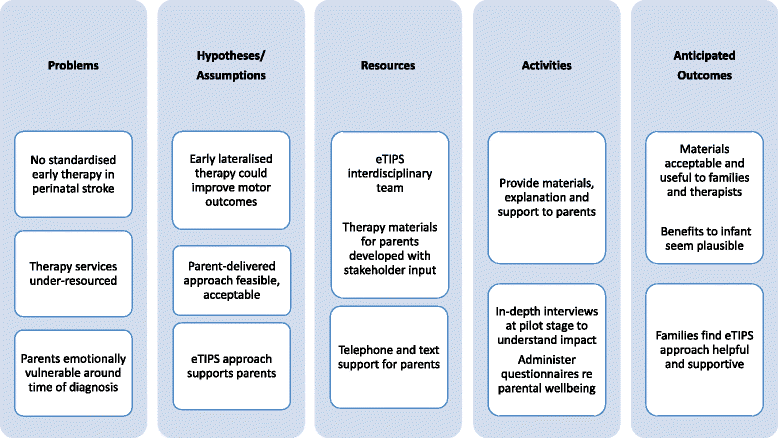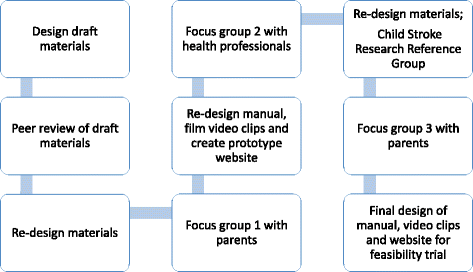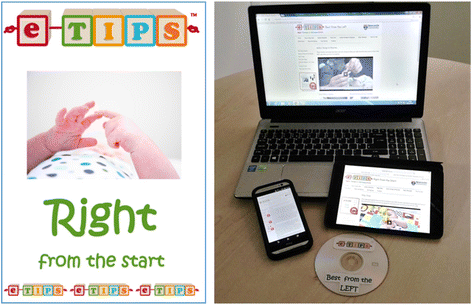Participatory design in the development of an early therapy intervention for perinatal stroke
- PMID: 28114899
- PMCID: PMC5259952
- DOI: 10.1186/s12887-017-0797-9
Participatory design in the development of an early therapy intervention for perinatal stroke
Abstract
Background: Perinatal stroke is the leading cause of unilateral (hemiparetic) cerebral palsy, with life-long personal, social and financial consequences. Translational research findings indicate that early therapy intervention has the potential for significant improvements in long-term outcome in terms of motor function. By involving families and health professionals in the development and design stage, we aimed to produce a therapy intervention which they would engage with.
Methods: Nine parents of children with hemiparesis and fourteen health professionals involved in the care of infants with perinatal stroke took part in peer review and focus groups to discuss evolving therapy materials, with revisions made iteratively. The materials and approach were also discussed at a meeting of the London Child Stroke Research Reference Group. Focus group data were coded using Normalisation Process Theory constructs to explore potential barriers and facilitators to routine uptake of the intervention.
Results: We developed the Early Therapy in Perinatal Stroke (eTIPS) program - a parent-delivered, home-based complex intervention addressing a current gap in practice for infants in the first 6 months of life after unilateral perinatal stroke and with the aim of improving motor outcome. Parents and health professionals saw the intervention as different from usual practice, and valuable (high coherence). They were keen to engage (high cognitive participation). They considered the tasks for parents to be achievable (high collective action). They demonstrated trust in the approach and felt that parents would undertake the recommended activities (high collective action). They saw the approach as flexible and adaptable (high reflexive monitoring). Following suggestions made, we added a section on involving the extended family, and obtained funding for a website and videos to supplement written materials.
Conclusions: Focus groups with parents and health professionals provided meaningful feedback to iteratively improve the intervention materials prior to embarking on a pilot study. The intervention has a high potential to normalize and become a routine part of parents' interactions with their child following unilateral perinatal stroke.
Keywords: Early intervention; Hemiparesis; Infant; Intervention development; Motor system; Normalisation process theory; Participatory design; Perinatal stroke; Therapy; Unilateral cerebral palsy.
Figures





References
-
- Raju TN, Nelson KB, Ferriero D, Lynch JK. Ischemic perinatal stroke: summary of a workshop sponsored by the National Institute of Child Health and Human Development and the National Institute of Neurological Disorders and Stroke. Pediatrics. 2007;120(3):609–16. doi: 10.1542/peds.2007-0336. - DOI - PubMed
MeSH terms
Grants and funding
LinkOut - more resources
Full Text Sources
Other Literature Sources
Medical
Miscellaneous

